The life and memory of the no living
Posted on November 22, 2021
It has been exactly 13 days since I moved into a new apartment in Bushwick. This is actually the thirteenth place that I have lived in, and I know it very well because I keep an excel tracker with addresses, cities, countries, and exact dates of all the places I have lived in, as well as a tracker of all the places I have traveled internationally with different types of visas, at different times in my life. I started these lists after suffering for days trying to fill out a form to apply for a permanent resident visa in Canada. I spent countless hours looking at satellite photos on Google Street, recovering old passports, finding flight check-ins on different emails accounts, and I even contacted my friend Ahmed on Facebook, with whom I hadn’t spoken in 8 years, to ask him if he will help me translating some stamps from my passport that were in Arabic.
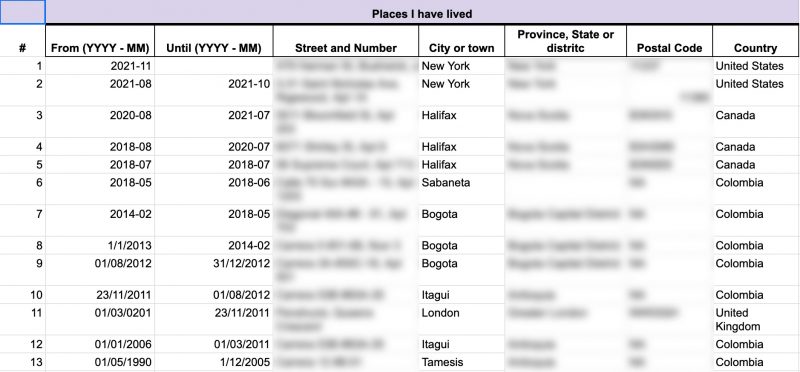
While I was packing all my things and preparing for the move, I was reading Mahmoud Keshavarz’s book: The Design Politics of the Passport. There he analyzes how this simple little notebook full of pages to be filled with stamps affects the mobility, social hierarchies, relationships between the body and the world, and the life opportunities of all those who decide to move from the place they were born. The book and the later discussion in class opened a window in my head where I started to see everything around me as a living entity. After recognizing the politics that emerge from all the materialities we humans design, I couldn’t unsee that truth any longer.
The pen I was holding suddenly felt different, like an object with the agency to change me, to turn me into something I was usually not aware of. The plates and cluttery I was packing were no longer passive objects to my service, but things that shaped the muscles in my mouth, my fingers, modeling my teeth, even doing things to my digestive system… I also started wondering about the IKEA designers of the coach that I hate or the designers that decided my bed frame will have those holes without knowing that my cats will use it to play and bother me while sleeping.
This feeling only continued and grew stronger in the new apartment where two days after the move, my landlord finally decided that it was time to turn on the heat. That night, still very tired of carrying our entire household to the third floor, Juan and I went to bed with our bodies sore, but our souls warm only to be woken up one hour later by a weird noise that seemed like something was going to explode any moment. The building is one of these typical exposed-brick buildings with three stories, two apartments per floor, and the famous railroad layout, which all my Colombian friends called the chorizo layout. The heating system in this house is old, of course, and is composed of these metallic panels covering some mechanism on the bottom part of the walls, as well as some tubs that go from the floor to the ceiling in the middle of my living room and a small studio. Both the panels and the tubs have some kind of little bell-shaped artifacts attached to them, and we didn’t have an idea of what those were or did until that fateful night.
The first thing we heard was a tiny squeak that we confused with some mice planning an attack on the cats, but it was actually the bell-shaped pieces working as valves, very similar to an old pressure cooker that tells you that the beans are ready. Those squeaks later were accompanied by small explosions coming from everywhere practically indistinguishable from the noise you heard when you are making a fire; you could sense the wood of the floors stretching, expanding as if the house just have woken up from a period of summer hibernation. Then abruptly we heard the steel expanding by the heat as well, and in this case, it was just chaos. Sounds of metal hitting metal hardly were added to the orchestra and this was the straw that broke the camel’s back.
The next day while sharing our experiences from the night over breakfast, Juan exclaimed: la casa está viva! -the house is alive! And we laughed, hoped for our animal bodies to accustom to the new sensorial experiences, and discussed the work from Forensic Architecture which book I was devouring at the time. Once more, this time talking about buildings instead of passports, the book reinforced the new learning of the week: the objects that we design can act back on us and design us, the design of things design us.
In his book, Weizman presents us with a series of projects where the practice of forensic and architecture are used together to analyze the transformations buildings undergo in response to environmental forces and the building’s experience of its users, AKA: humans, bugs, pigeons, rats, cats, dogs, ants, plants. Everything with the goal of collecting facts to build legal cases against state agencies and confront secrecy and denial.
Something I found fascinating about his work was the use of architecture as a mnemonic device, as a channel to testimony. Serving as a medium between memory and narrative and helping people to remember experiences obscured by trauma or the inevitable blurriness of our memory.
I wanted to do a mnemonic experiment myself using the old pictures from the first house in the excel sheet I mentioned at the beginning. The house I lived in for the first 15 years of my life and hence, the house that has been affected the most by my presence as well as the one that has shaped me the most. The goal: to uncover hidden memories and reconstruct a model of the house that I loved deeply.
My mom and my brother sent me a set of 28 images through WhatsApp and oh boy if they trigger stuff. There are many stories to tell, but I will leave just a sneak peek here that can continue over a gin and tonic in this 13th house I live in.
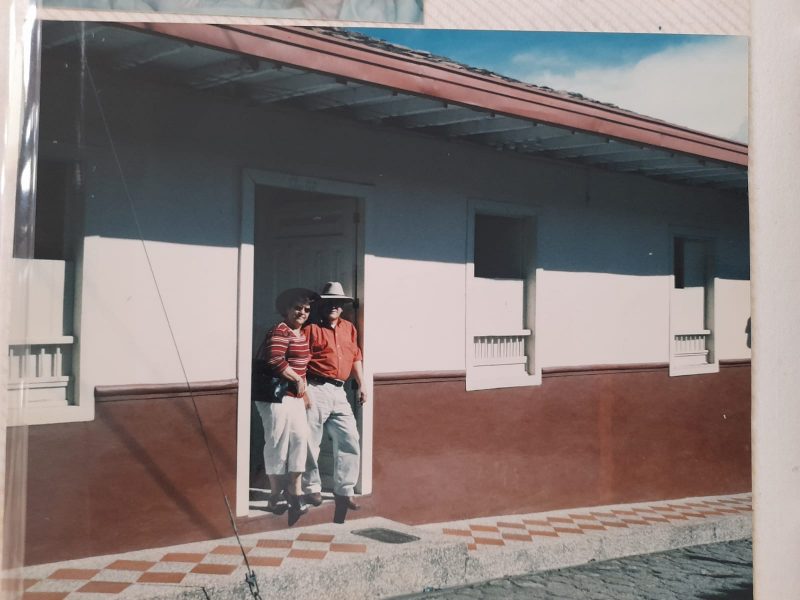
The house standing proudly since 1953 in the Carrera 12 #8-51 Támesis, Colombia.
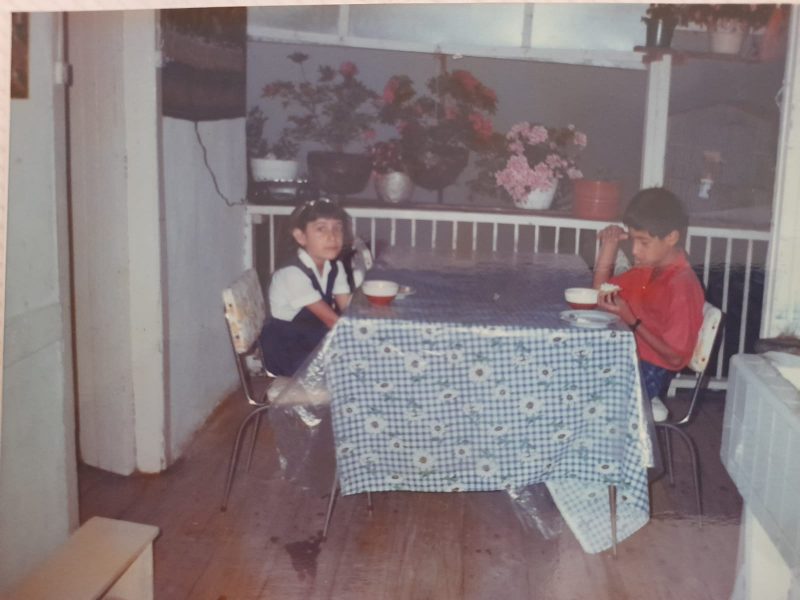
The dining room of the house on a typical foggy morning before its younger inhabitants went to school. The house had wooden floors that have evident marks of food and liquids spillover from numerous meals, squashed cockroaches, and the movement of furniture and humans.
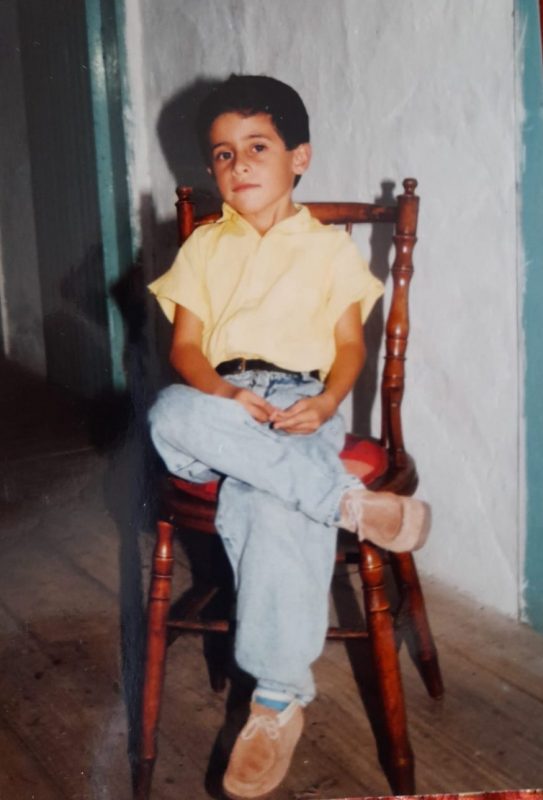
The house was made with the old earthquake-resistant technique called bahareque, where the walls were made with a base of giant bamboo filled with a mix of yellow soil, sand, and cavalry excrement. You can see the marks of old fillings and the wall behind my brother.
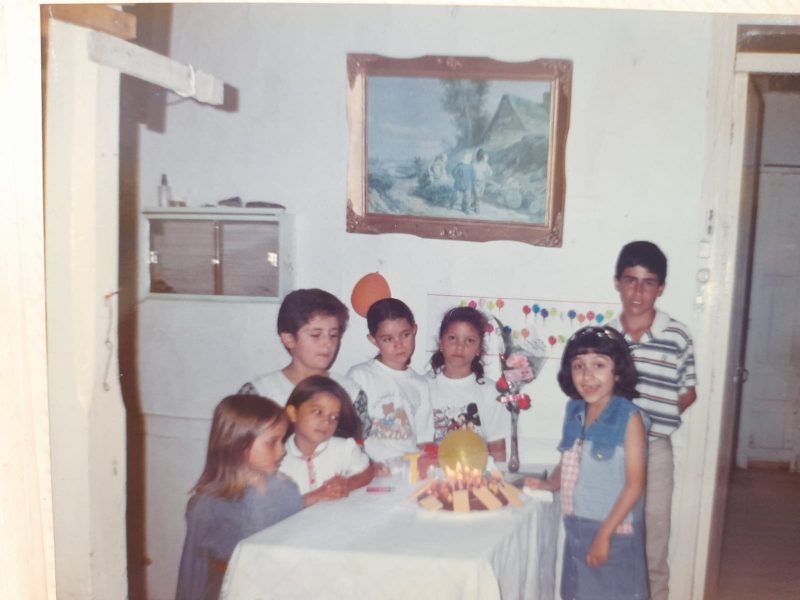
Here, I just want to show the faces of old friends who didn’t want to take their eyes off the birthday cake even to take a picture.
GAMZ.